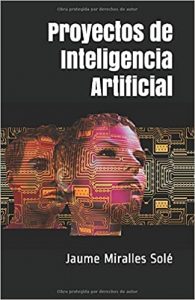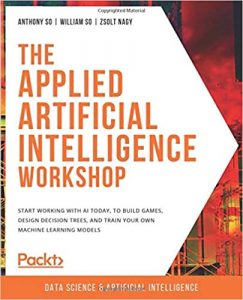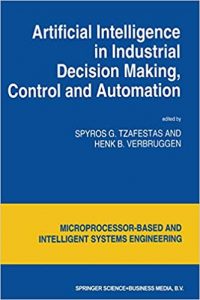¿QUÉ ES EL GRADO EN INGENIERÍA MATEMÁTICA E INTELIGENCIA ARTIFICIAL?
El Grado en Ingeniería Matemática e Inteligencia Artificial (*) de la Escuela Técnica Superior de Ingeniería (Comillas ICAI) es un programa innovador que da respuesta a la gran demanda, presente y futura, de profesionales capaces de afrontar los retos que plantean la industria conectada y la economía digital. Este nuevo grado ofrece una sólida formación en matemáticas aplicadas, ciencias de la computación e Inteligencia Artificial y se dirige a alumnos que quieran ser protagonistas de la transformación digital que vivimos, y que tengan una fuerte inquietud por emprender.
Los alumnos de este grado disfrutarán de las metodologías docentes más avanzadas y de laboratorios equipados con las últimas tecnologías, apostando fuertemente por el trabajo en equipo, la formación práctica orientada a proyectos y el emprendimiento, y en permanente conexión con el ecosistema empresarial y tecnológico que está liderando la transformación digital a nivel internacional.
¿A QUIÉN VA DIRIGIDO ESTE GRADO?
Se recomienda que los candidatos hayan estudiado el Bachillerato en la modalidad de Ciencias y Tecnología, habiendo cursado asignaturas de matemáticas y física para facilitar su adaptación a los estudios de grado. De igual forma, es factible que provengan de ciclos formativos de Grado Superior relacionados con las TIC y la electrónica
¿CÓMO SON LOS ESTUDIOS?
Este Grado podrá estudiarse a partir del curso 2021/2022 en ICAI. El grado tiene una duración de cuatro años y se imparte en español e inglés. Los estudiantes de este programa podrán realizar estancias internacionales como alumnos de intercambio gracias a los acuerdos internacionales que tiene Comillas ICAI. Entre las salidas de este grado se incluyen algunas en las principales profesiones del futuro. Podrás trabajar en el ámbito de la Inteligencia Artificial como Data Scientist, Machine Learning Engineer, Computer Vision Engineer, entre otras. También en la creación y gestión de empresas de base tecnológica, en la consultoría tecnológica y en el campo de la investigación y desarrollo en ciencia de datos e inteligencia artificial.
PLAN DE ESTUDIOS
PRIMER CURSO
Programación
Algoritmos y estructuras de datos
Cristianismo y ética social
Análisis matemático y cálculo vectorial
Álgebra y geometría
Física
Probabilidad y estadística
SEGUNDO CURSO
Ecuaciones diferenciales
Matemática discreta
Sistemas electrónicos
Paradigmas y técnicas de programación
Fundamentos de Inteligencia Artificial
Sistemas dinámicos
Métodos numéricos
Adquisición de datos
Optimización y simulación
Aprendizaje automático
TERCER CURSO
Geometría computacional
Cognición humana e Inteligencia Artificial
Bases de datos
Robots móviles autónomos
Visión por ordenador I
Arquitectura Big Data
Matemática avanzada
Análisis y predicción de series temporales
Procesamiento de lenguaje natural I
Visualización de datos
Aprendizaje profundo
Ingeniería del software y desarrollo de aplicaciones
Tecnologías de procesamiento Big Data
Proyecto de innovación y emprendimiento
CUARTO CURSO
Tecnologías para la digitalización
Procesamiento de lenguaje natural II
Aprendizaje por refuerzo
Visión por ordenador II
Economía y empresa
Ciberseguridad y protección de la información
Computación cuántica
Modelos de negocio disruptivos
Ética e Inteligencia Artificial
Optativas
Trabajo Fin de Grado
OPTATIVAS
Prácticas
Proyecto de Emprendimiento
AI Lab
Proyecto de Investigación
APRENDE SOBRE INGENIERÍA MATEMÁTICA E INTELIGENCIA ARTIFICIAL
Te dejo a continuación algunos libros que pueden gustarte muchísimo y pueden ayudarte a adentrarte en el mundo de la Inteligencia Artificial con una base de Ingeniería Matemática. Esta ciencia está irrumpiendo en España, por lo que algunos de ellos están en Inglés. Si quieres saber más sobre estos libros, haz clic en el título de cada uno de ellos.
Proyectos de Inteligencia Artificial
 Mucho se ha escrito en los últimos años sobre inteligencia artificial: Qué es, para qué sirve, qué beneficios puede aportar a las muy diversas industrias, cómo va a afectar a la sociedad del futuro… También es fácil encontrar abundante literatura y artículos en la web sobre las muy diversas técnicas y algoritmos de machine learning y deep learning, junto a tutoriales y código de ejemplo que ayudan a entender e incluso a implementar interesantes experimentos. Sin embargo, muy poco se ha escrito – y mucho menos en lengua española – sobre el cómo se abordan los proyectos de inteligencia artificial en la empresa: cómo son estos proyectos IA, qué metodologías deben seguirse, qué recursos materiales son necesarios y dónde pueden obtenerse, así como qué perfiles profesionales son necesarios para poder abordar con éxito este tipo de proyectos que, siendo proyectos de software, tienen aspectos muy particulares por el hecho de tener que entrenar y operacionalizar modelos. Y es que ya no se trata sólo de programar una aplicación, ahora hay que entrenar un algoritmo con un conjunto de datos que representan una realidad concreta y, casi siempre, cambiante, o bien reutilizar los cada vez más abundantes recursos listos para utilizar que nos ofrece el nuevo mercado de las plataformas de inteligencia artificial en la nube y el aún más numeroso conjunto de recursos de código abierto disponibles de forma gratuita en internet.Este libro pretende ser una guía para aquellos profesionales que, con un conocimiento conceptual básico sobre qué es la inteligencia artificial, el machine learning o el deep learning, tienen la inquietud o la necesidad de llevar a cabo con garantías de éxito proyectos de software que hagan uso de capacidades de inteligencia artificial empresarial. El libro busca proporcionar una comprensión holística del ciclo de vida de una capacidad de inteligencia artificial empresarial, desde su definición funcional, el análisis de las distintas opciones que ofrece el mercado para su implementación y las distintas prácticas y herramientas necesarias para acompañar el entrenamiento, validación y operacionalización de modelos en un entorno productivo empresarial. El texto no entra en detalles técnicos sobre algoritmos o técnicas específicas de tratamiento de datos, pero sí que busca proporcionar una amplia guía de métodos y prácticas que, poco a poco, se van asentando como las mejores. El texto se acompaña de numerosos enlaces con información complementaria que permite al lector profundizar en aspectos relevantes que, por su extensión o especificidad quedan fuera del ámbito de esta obra.
Mucho se ha escrito en los últimos años sobre inteligencia artificial: Qué es, para qué sirve, qué beneficios puede aportar a las muy diversas industrias, cómo va a afectar a la sociedad del futuro… También es fácil encontrar abundante literatura y artículos en la web sobre las muy diversas técnicas y algoritmos de machine learning y deep learning, junto a tutoriales y código de ejemplo que ayudan a entender e incluso a implementar interesantes experimentos. Sin embargo, muy poco se ha escrito – y mucho menos en lengua española – sobre el cómo se abordan los proyectos de inteligencia artificial en la empresa: cómo son estos proyectos IA, qué metodologías deben seguirse, qué recursos materiales son necesarios y dónde pueden obtenerse, así como qué perfiles profesionales son necesarios para poder abordar con éxito este tipo de proyectos que, siendo proyectos de software, tienen aspectos muy particulares por el hecho de tener que entrenar y operacionalizar modelos. Y es que ya no se trata sólo de programar una aplicación, ahora hay que entrenar un algoritmo con un conjunto de datos que representan una realidad concreta y, casi siempre, cambiante, o bien reutilizar los cada vez más abundantes recursos listos para utilizar que nos ofrece el nuevo mercado de las plataformas de inteligencia artificial en la nube y el aún más numeroso conjunto de recursos de código abierto disponibles de forma gratuita en internet.Este libro pretende ser una guía para aquellos profesionales que, con un conocimiento conceptual básico sobre qué es la inteligencia artificial, el machine learning o el deep learning, tienen la inquietud o la necesidad de llevar a cabo con garantías de éxito proyectos de software que hagan uso de capacidades de inteligencia artificial empresarial. El libro busca proporcionar una comprensión holística del ciclo de vida de una capacidad de inteligencia artificial empresarial, desde su definición funcional, el análisis de las distintas opciones que ofrece el mercado para su implementación y las distintas prácticas y herramientas necesarias para acompañar el entrenamiento, validación y operacionalización de modelos en un entorno productivo empresarial. El texto no entra en detalles técnicos sobre algoritmos o técnicas específicas de tratamiento de datos, pero sí que busca proporcionar una amplia guía de métodos y prácticas que, poco a poco, se van asentando como las mejores. El texto se acompaña de numerosos enlaces con información complementaria que permite al lector profundizar en aspectos relevantes que, por su extensión o especificidad quedan fuera del ámbito de esta obra.
The Applied Artificial Intelligence Workshop
 With knowledge and information shared by experts, take your first steps towards creating scalable AI algorithms and solutions in Python, through practical exercises and engaging activities
With knowledge and information shared by experts, take your first steps towards creating scalable AI algorithms and solutions in Python, through practical exercises and engaging activities
Key Features
- Learn about AI and ML algorithms from the perspective of a seasoned data scientist
- Get practical experience in ML algorithms, such as regression, tree algorithms, clustering, and more
- Design neural networks that emulate the human brain
Book Description
You already know that artificial intelligence (AI) and machine learning (ML) are present in many of the tools you use in your daily routine. But do you want to be able to create your own AI and ML models and develop your skills in these domains to kickstart your AI career?
The Applied Artificial Intelligence Workshop gets you started with applying AI with the help of practical exercises and useful examples, all put together cleverly to help you gain the skills to transform your career.
The book begins by teaching you how to predict outcomes using regression. You’ll then learn how to classify data using techniques such as k-nearest neighbor (KNN) and support vector machine (SVM) classifiers. As you progress, you’ll explore various decision trees by learning how to build a reliable decision tree model that can help your company find cars that clients are likely to buy. The final chapters will introduce you to deep learning and neural networks. Through various activities, such as predicting stock prices and recognizing handwritten digits, you’ll learn how to train and implement convolutional neural networks (CNNs) and recurrent neural networks (RNNs).
By the end of this applied AI book, you’ll have learned how to predict outcomes and train neural networks and be able to use various techniques to develop AI and ML models.
What you will learn
- Create your first AI game in Python with the minmax algorithm
- Implement regression techniques to simplify real-world data
- Experiment with classification techniques to label real-world data
- Perform predictive analysis in Python using decision trees and random forests
- Use clustering algorithms to group data without manual support
- Learn how to use neural networks to process and classify labeled images
Who this book is for
The Applied Artificial Intelligence Workshop is designed for software developers and data scientists who want to enrich their projects with machine learning. Although you do not need any prior experience in AI, it is recommended that you have knowledge of high school-level mathematics and at least one programming language, preferably Python. Although this is a beginner’s book, experienced students and programmers can improve their Python skills by implementing the practical applications given in this book.
Table of Contents
- Introduction to Artificial Intelligence
- An Introduction to Regression
- An Introduction to Classification
- An Introduction to Decision Trees
- Artificial Intelligence: Clustering
- Neural Networks and Deep Learning
INGENIERÍA MATEMÁTICA E INTELIGENCIA ARTIFICIAL
Artificial Intelligence in Industrial Decision Making, Control and Automation: 14 (Intelligent Systems, Control and Automation: Science and Engineering)
 This book is concerned with Artificial Intelligence (AI) concepts and techniques as applied to industrial decision making, control and automation problems. The field of AI has been expanded enormously during the last years due to that solid theoretical and application results have accumulated. During the first stage of AI development most workers in the field were content with illustrations showing ideas at work on simple problems. Later, as the field matured, emphasis was turned to demonstrations that showed the capability of AI techniques to handle problems of practical value. Now, we arrived at the stage where researchers and practitioners are actually building AI systems that face real-world and industrial problems. This volume provides a set of twenty four well-selected contributions that deal with the application of AI to such real-life and industrial problems. These contributions are grouped and presented in five parts as follows: Part 1: General Issues Part 2: Intelligent Systems Part 3: Neural Networks in Modelling, Control and Scheduling Part 4: System Diagnostics Part 5: Industrial Robotic, Manufacturing and Organizational Systems Part 1 involves four chapters providing background material and dealing with general issues such as the conceptual integration of qualitative and quantitative models, the treatment of timing problems at system integration, and the investigation of correct reasoning in interactive man-robot systems.
This book is concerned with Artificial Intelligence (AI) concepts and techniques as applied to industrial decision making, control and automation problems. The field of AI has been expanded enormously during the last years due to that solid theoretical and application results have accumulated. During the first stage of AI development most workers in the field were content with illustrations showing ideas at work on simple problems. Later, as the field matured, emphasis was turned to demonstrations that showed the capability of AI techniques to handle problems of practical value. Now, we arrived at the stage where researchers and practitioners are actually building AI systems that face real-world and industrial problems. This volume provides a set of twenty four well-selected contributions that deal with the application of AI to such real-life and industrial problems. These contributions are grouped and presented in five parts as follows: Part 1: General Issues Part 2: Intelligent Systems Part 3: Neural Networks in Modelling, Control and Scheduling Part 4: System Diagnostics Part 5: Industrial Robotic, Manufacturing and Organizational Systems Part 1 involves four chapters providing background material and dealing with general issues such as the conceptual integration of qualitative and quantitative models, the treatment of timing problems at system integration, and the investigation of correct reasoning in interactive man-robot systems.
